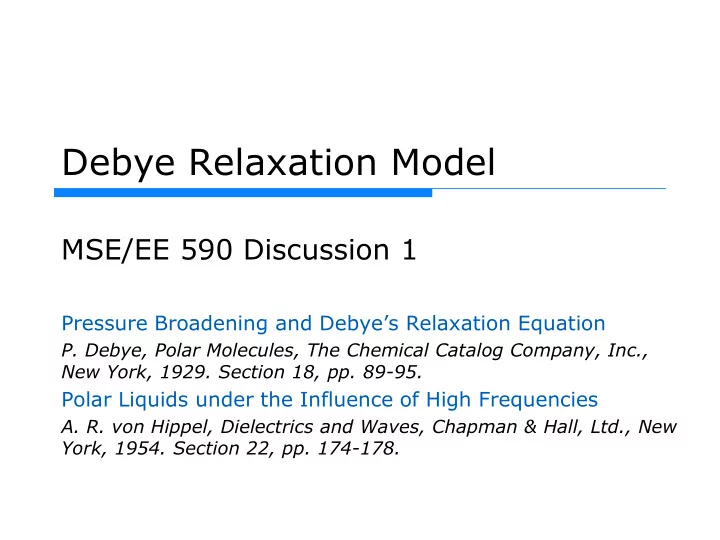

Debye Relaxation Model MSE/EE 590 Discussion 1 Pressure Broadening and Debye’s Relaxation Equation P. Debye, Polar Molecules, The Chemical Catalog Company, Inc., New York, 1929. Section 18, pp. 89-95. Polar Liquids under the Influence of High Frequencies A. R. von Hippel, Dielectrics and Waves, Chapman & Hall, Ltd., New York, 1954. Section 22, pp. 174-178.
Debye Dutch-American physicist, 1884-1966 Nobel prize in chemistry, 1936 362-08-Lecture 20 2
Electric dipole moment 362-08-Lecture 20 3
Torque and potential energy Potential energy: U = - μ∙ E = - | μ ||E|cos θ 362-08-Lecture 20 4
Polarization mechanisms 362-08-Lecture 20 5
Relaxation time τ – relaxation time The time required for the dipole moments of the molecules to revert to a random distribution after removal of the applied field E . Measures the time required to reduce the order to 1/e of its original value, due to the randomizing agitation of Brownian movement. 362-08-Lecture 20 6
Equivalent circuit - resonator 362-08-Lecture 20 7
Equivalent circuit - relaxor 362-08-Lecture 20 8
Summary: Debye relaxation Assumes polar molecules rotate in a medium of dominating friction (over- damped) Applied E is replaced by Lorentz E ’ that accounts for the presence of polar neighbors Necessary for condensed matter Replacing E by E ’ has the effect of lengthening τ Does this make sense to you? 362-08-Lecture 20 9
Recommend
More recommend